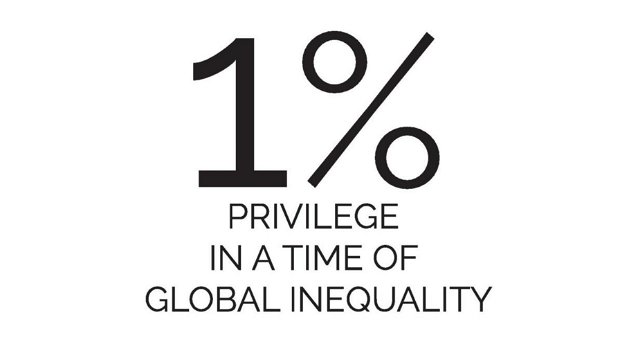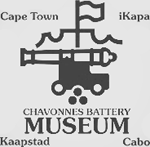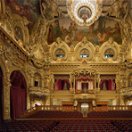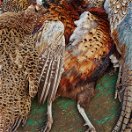1%: Privilege in a Time of Global Inequality

Coming to South Africa for the first time, in its 55th location world-wide, the internationally acclaimed 1%: Privilege in a Time of Global Inequality photographic exhibition will be showcased at the Chavonnes Battery Museum, Clock Tower, V&A Waterfront in Cape Town, from 3rd November 2016 until February 2017.
“This exhibition brings 40 images by the world's leading photographers to our shores. It affords the opportunity to highlight this topic as South Africa remains one of the most unequal societies in the world," - says Heidi Erdmann, Cape Town exhibition curator.
“In curating 1%: Privilege in a Time of Global Inequality, I have tried to gather images that examine wealth globally and in many different ways. I selected a small number of polished, well-crafted, medium-format photographs by some of today’s best photographers. I wanted to borrow the language of privilege and use it to observe and critique privilege."
"Some of the images map out points in the world of affluence, such as education, leisure and healthcare (while avoiding clichés like fur coats and private jets). Other images are positioned outside the world of the 1%, looking back in."
"The idea behind the project is to shine a light on an incredibly powerful, but often invisible or misunderstood, segment of the population” - Myles Little
Myles Little, Senior Photo Editor at TIME spent almost three years curating over 2 000 photographs to reach the final 50 presented in a book released this year. Edited by Myles, it includes text by Joseph Stiglitz, PhD, Nobel Prize-winning economist, and Geoff Dyer, inequality expert and National Book Critics Circle Award-winning writer.
The Huffington Post calls Irish-born Myles “a rising leader and visionary in the industry”. He studied photography at the Savannah College of Art and Design, and has gone on to produce award-winning covers and features with some of the best photographers in the world. Myles has lectured on photography internationally and curated two photography exhibits in New York. 1% is his third curated exhibition.
Location:
Chavonnes Battery Museum, Clock Tower, V&A Waterfront
Opening hours:
Monday – Wednesday 09:00-16:00 Thursday - Sunday 9:00 – 18:00
Exhibition dates:
3rd November 2016 – February 2017
Costs:
R70 adults, R50 seniors/students/Red Bus ticket-holders,
R30 children (6-16 yrs) under 6 free
Tickets are available at the door and from Webtickets.co.za
Contact details:
Tel: 021 416 6230 Email: info@chavonnesbattery.co.za
A selection of the photographs with artist statement, comment by Myles Little and artists biography:
Zed Nelson Wall around private home (Cape Town, South Africa 2014)
Twenty years after the end of Apartheid, South Africa remains one of the most unequal societies in the world. Mandela preached forgiveness and cooperation, and paved the way for a robust democracy. But now he has gone. The African National Congress (ANC) came to power with promises that it would improve the lives of the majority Black population. But many Black South Africans today are materially worse off now than they were under Apartheid. The new black elite ruling class may be doing well, but the majority of black South Africans have been left behind. Ironically, no longer the pariah of the world, South Africa’s white minority are even better off now than they were during the Apartheid era. But with Mandela gone, the nation’s white population are looking over their shoulders. Many fear for their future. Without Mandela’s steadying, fatherly influence, there is no consensus about what will happen now: some prophesize ‘the next Zimbabwe’. 80 per cent of privately owned land in South Africa is still in white hands, and young firebrand opposition leaders are calling for radical land re-distribution, Mugabe style. The majority poor black population are increasingly frustrated, the white population are increasingly fearful. With the great statesman gone, the stage is set for change. Mandela leaves behind a poignant but fragile legacy – and the question of whether the South Africa that he constructed will long outlast his departure. - Zed Nelson
(b. 1965, Uganda) Nelson is known for major projects that interrogate contemporary Western society. He has published three books, Gun Nation, Love Me, and A Portrait of Hackney, and has won multiple awards, including Daily Life, first prize singles in World Press Photo and the Visa d’Or, Perpignan. Nelson’s work has been exhibited at Tate Britain, numerous international shows, and is in the permanent collections of the Victoria and Albert Museum and the National Portrait Gallery, London.
Paolo Woods and Gabriele Galimberti (INSTITUTE) Man in swimming pool from The Heavens (Singapore 2013)
"What do Tax Havens look like and what do they mean? From Delaware to Jersey; from Singapore to Panama; from the British Virgin Islands to the City of London, passing through Cayman, Luxembourg and the Netherlands, a secretive world that is quite different from what you imagine. It has been estimated that as much as $32 trillion are sheltered in tax havens worldwide, largely out of sight. That is 13 times the GDP of the United Kingdom. Much of this money is stashed offshore by very wealthy individuals. But a growing share is owned by companies that use tax havens, often legally, to escape financial regulations or to reduce their taxes, draining the resources countries can spend on education, health care and security. Tax havens are not an exotic tropical eccentricity, but have become a structural instrument of the globalized economy. They confront us with fundamental moral issues, involving the relationships between public and private; between companies and states; and between the haves and the have-nots." - Paolo Woods and Gabriele Galimberti
“That image of the apartment with an infinity pool is from a project that photographs tax havens all around the world, which are legal as you know; places where the wealthy corporations and individuals can stash their money to avoid the taxes. And Singapore is one of the capitals for this and that's the Singapore skyline in the background. And what I find interesting about it is that there are a couple of layers in this, as you say it is just simply beautiful and luxurious, infinity pools have sort of become one of the markers of luxury for whatever reason, and for the second layer as I just said, the tax haven element. And a third layer, in my reading of it, I can't speak for the photographers, is a sense of complacency in the face of impending doom, or catastrophe. The way I see it is this sort of strong diagonal line created by the edge of the pool, gives a sense of motion, gives a sense of flow of this water as it's about the cascade over, seemingly over the side of a river, with the man in it. Of course that's not going to happen but within the logic of the image, there is risk in this image and the sense of complacency in this guy enjoying himself and easily floating and when you put that within the context of finance, it takes on a new meaning.” - Myles Little
Paolo Woods (b. 1970, The Netherlands) is devoted to long-term projects that blend photography with investigative journalism. Woods has been recognized twice by World Press Photo awards and has had solo exhibitions in more than ten countries around the world. His work is in private and public collections. Gabriele Galimberti (b. 1977, Italy) is known for his typological portrait series shot around the globe. He began his career as a commercial photographer, but has gone on to exhibit his documentary projects at venues such as Festival Images, Les Rencontres d’Arles, and the Victoria and Albert Museum.
David Chancellor (kiosk) Untitled #IV, Mine Security, North Mara Gold Mine, from Intruders (Tanzania 2011)
"The seven villages around the North Mara Gold Mine, among the poorest and most underdeveloped in Tanzania, are located in the north western corner of the country, 30 kilometers from the Kenyan border and belong mostly to the Kuria people, who were traditionally cattle farmers. On average 800 villagers and migrants enter North Mara mine illegally every day to scrounge for rock. They have borrowed an English word to describe themselves: 'intruders'. The word has entered the Swahili language, with no negative connotation, as the name of a new occupation that can produce money and even wealth. And the rising price of gold has drawn a rush of newcomers from across East Africa. As long as Tanzanians are forced to choose between dying for a living and the potential wealth that they can gain by invading the mine, the bloodshed is likely to continue..." - David Chancellor
"This photograph comes from a diamond mine in Tanzania. Within this series [photographer David] Chancellor also documents impoverished locals who happen to live close to the mine, and who are scrambling all over the rocks to try to get traces of diamond dust or rock," Little said. "I just love this perfect distillation into one frame of high luxury, the environmental costs of mining, and the high-powered violence that can be brought to bear when privilege is questioned.” - Myles Little
(b. 1959, France) Chancel has exhibited at Les Rencontres d’Arles, C/O Berlin, The Photographers’ Gallery, and the 53rd Venice Biennale. His long-term project Datazone explores parts of the world that are recurrently in the news or, conversely, hardly ever picked up by the media radar. This project has taken him to Kabul, Fukushima, the Niger Delta, and Pyongyang. Philippe Chancel is represented by Melanie Rio Gallery, Nantes and Paris.
Anna Skladmann Varvara in Her Home Cinema from Little Adults (Russia 2010)
These are the Little Adults of a certain segment of Russian society — not only the children of oligarchs, but of designers and directors, artists and musicians, business people and oil barons. “It is the newly formed and still-forming upper class”
Ms. Skladmann was born to Russian parents in a small German town. She grew up hearing of her grandmother’s “sparkling stories” about Russia. She visited Russia for the first time in 2000, and was mesmerized by a table of children she saw at a New Year’s Eve masquerade ball. “The way that they were holding themselves on the table, the way that they were moving around, was just not what I’ve known from children growing up in Europe,” said Ms. Skladmann, who was 14 at the time. They looked, instead, like tiny adults.
She moved to Moscow from New York in 2009. Her dream was just to dive into this world and to understand it as she grew up with a completely different idea of a childhood, so for her this was a social phenomenon.
Ms. Skladmann hopes to revisit the Little Adults in 10 years, when they really are entering adulthood. The last one she photographed was Varvara, a blonde, pigtailed girl in a yellow dress leaping into the air. For her, this photograph is her breaking out of a cocoon, like a butterfly trying to fly away from something. “I sort of felt the same way. I had to move on.” - Anna Skladmann
(b. 1986, Germany) has won the Arles Photo Folio Prize, and her work has been nominated for the Prix Pictet. Her book Little Adults is a collection of portraits of the first generation of children born into wealth. Her photographic projects have been exhibited in institutions worldwide, including the Maison Européenne de la Photographie, Moscow Museum of Modern Art, and the Museum für Kunst und Gewerbe, Hamburg.
David Leventi Opéra de Monte-Carlo, from Opera (Monaco 2009)
"“Opera" records the interiors of world-famous opera houses. Architecturally meticulous, this body of work serves to historically document these national and cultural landmarks. The opera houses in "Opera" stand as symbols of their nations’ wealth and grandeur, their dedication to the promotion of the arts and to bringing communities together. I have photographed each house systematically from the spot at centre stage where a performer would stand. In the same manner as which the voice of each famous singer projects and bounces off ornate private boxes and resonates under painted trompe l’oeil ceilings, the light in the opera house strikes each of these features and returns to the camera, affixing them to film. The photographs in "Opera" freeze for eternity the instant before a performance takes place. Viewers are invited to pour over details, to feel the potential energy in a space where it is all just about to happen. The actual performance is just a part of the overall awe-inspiring experience of going to the theatre – I believe that the space itself can be the event." - David Leventi
"The show is about exclusivity; it's about privilege, and so I'm using that language of privilege and wealth to critique privilege and wealth," he said. Aside from its incredible decadence, Little loved the idea that this opera house in Monte Carlo was also located inside a casino, a place of "high risk and lots of money." - Myles Little
(b. 1978, US) Leventi is a fine-art photographer based in New York City. He received his BFA in Photography from Washington University in St. Louis, Missouri and has been published in TIME, the New York Times Magazine, ESPN The Magazine, FT Weekend Magazine, and Condé Nast Traveler. Leventi is represented by Rick Wester Fine Art in New York, Arthur Roger Gallery in New Orleans, Bau-Xi Photo in Toronto and Jackson Fine Art in Atlanta.
Ben Quinton Pheasants are laid out on a hunter’s truck, from An English Romance (UK 2011)
An English Romance by Ben Quinton follows the activity of a shoot and captures the regular occurrences at these events. The images cover a range of activities and sights, including the dead pheasants, the men at work, and transportation. He has now decided to start shooting a new project about what he feels is a romance with the English countryside. "Pheasant shooting, fly fishing, farming, stately homes are all ingrained in the history of our countryside and help I believe make it what it is today and are what help make our countryside feel distinctly English." - Ben Quinton
(b. 1990, UK) Quinton studied commercial photography, but his documentary work appears in periodicals such as the Saturday Telegraph Magazine and Monocle. Based in London, he is interested in British culture in the United Kingdom and abroad, as well as the rapid westernization of Africa.











Share This Page